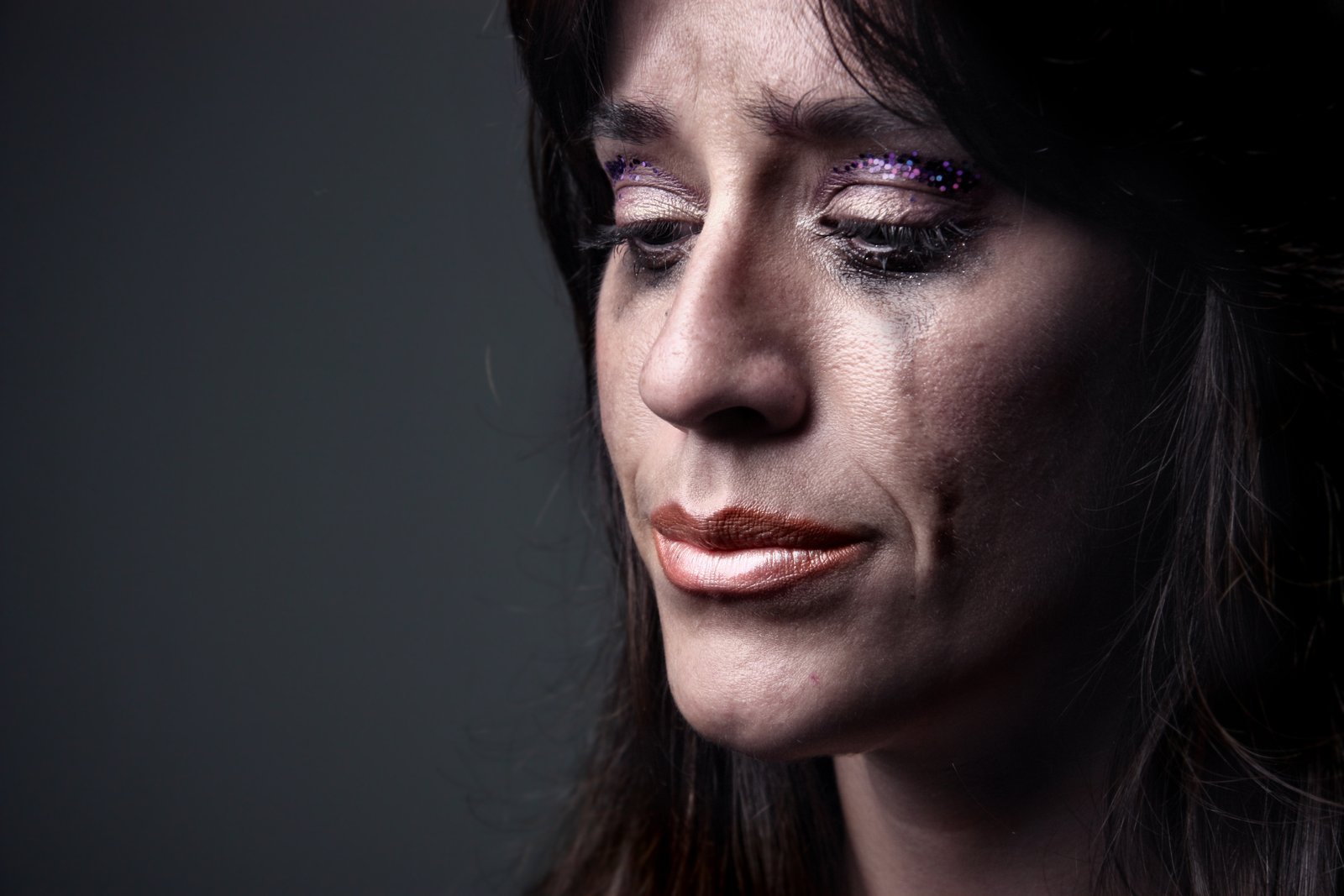Heartbreak is an emotional rollercoaster that many of us will unfortunately ride at some point in our lives. The end of a relationship, whether through separation, divorce, or the loss of a loved one, can leave us feeling as though we’ve been hollowed out, with a gaping wound where our heart used to be. This pain is not just metaphorical; the emotional impact of heartbreak can manifest physically, affecting our sleep, appetite, and even our will to move forward. It’s a state of being that can feel like a thick fog, clouding our judgment and making the simplest tasks seem insurmountable.
But what if I told you that there was a way to clear this fog in just seven days? It might sound too good to be true, or perhaps even shocking, but through my own journey of trial, error, and eventual discovery, I’ve stumbled upon a trick that not only promises to heal your broken heart but does so in a remarkably short span of time. This isn’t a gimmick or a quick fix but a genuine path to emotional recovery that combines wisdom from centuries-old practices with modern psychological insights. As we explore this guide together, keep an open mind and remember: healing starts with believing that recovery is possible.
Understanding Heartbreak
The Science Behind Emotional Pain
Emotional pain, much like physical pain, triggers a response in our brain. When we experience heartbreak, our brain processes this event in a manner akin to physical pain, releasing stress hormones and activating the anterior cingulate cortex—the same area that lights up when we suffer a physical injury. This explains why the pain of a broken heart can feel so visceral and overwhelming. Furthermore, studies have shown that social rejection activates many of the same neural pathways as physical pain, which is why emotional healing can be just as complex and demanding as recovering from a physical injury.
Common Symptoms of a Broken Heart
The symptoms of a broken heart go beyond mere sadness or longing. They can manifest physically, emotionally, and behaviorally. Physically, one might experience insomnia, changes in appetite, and a decreased immune response, making one more susceptible to illnesses. Emotionally, feelings of despair, loss of interest in activities once enjoyed, and profound sadness are common. Behaviorally, there might be a withdrawal from social activities, a decline in productivity, and an inability to concentrate. These symptoms not only signify the depth of emotional pain but also the body’s response to intense stress.
Why Traditional Healing Methods Can Be Slow
Traditional methods of healing a broken heart often emphasize time as the main healing component, encapsulated in the adage, “time heals all wounds.” However, this passive approach can sometimes be slow and, for some, ineffective. This is because it doesn’t actively address the neural pathways affected by heartbreak or engage the body’s potential to accelerate emotional healing. Moreover, conventional advice often overlooks the importance of actively processing emotions, instead suggesting distraction or suppression, which can lead to unresolved feelings that prolong the healing process. Therefore, while time is an essential factor, combining it with active, targeted strategies can significantly expedite the journey towards emotional recovery.
The Discovery of a Shocking Trick
My Personal Journey with Heartbreak
My journey into the depths of heartbreak began with the end of a relationship that I had believed was my forever. The subsequent feelings of loss and emptiness were overwhelming, leading me down a path of relentless soul-searching and self-help quests. I read countless books, attended workshops, and even sought therapy, but the fog of sadness seemed impenetrable. It was during this period of despair that I stumbled upon a concept so simple yet profoundly impactful, it seemed almost revolutionary. This discovery was not the result of a singular moment of epiphany but the culmination of trial and error, insights gleaned from various healing methodologies, and a deep dive into psychological research.
How I Discovered the Trick
The trick that transformed my healing journey came from an unexpected blending of ancient wisdom and modern psychological practices. I began experimenting with techniques that focused not just on the mind but also on the body’s capacity to influence emotional healing. By integrating these practices into a consistent routine, I started noticing significant shifts in my emotional state within just a few days. This method wasn’t a magic pill but a strategic approach that leveraged the body-mind connection in a way that traditional healing methods hadn’t considered. My discovery was both a personal breakthrough and a testament to the power of holistic healing.
Preparing Yourself for a Quick Recovery
Embarking on a rapid recovery journey from heartbreak requires more than just the desire to move past your pain; it necessitates a readiness to actively engage in the healing process. This preparation involves setting aside any skepticism and embracing the possibility of a quick recovery. It’s crucial to approach this method with an open mind and a commitment to follow through with the steps. Additionally, creating a supportive environment that nurtures healing is essential. This means surrounding yourself with positivity, whether through supportive friends and family, uplifting activities, or environments that inspire peace and reflection. Preparing yourself for a quick recovery is about aligning your mindset, environment, and actions towards the singular goal of healing.
Implementing the Trick: A Step-by-Step Guide
Day 1: Acknowledging Your Pain
The first step in healing is to confront and acknowledge your pain. This means giving yourself permission to feel whatever emotions arise without judgment. Create a safe space for yourself where you can be vulnerable. It could be a quiet room, surrounded by items that bring you comfort. Sit with your feelings, recognize them, and understand that it’s okay not to be okay. Acknowledgment is a powerful step toward healing because it validates your emotional experience and marks the beginning of your journey to recovery.
Day 2: Engaging in Mindfulness and Meditation
On the second day, introduce mindfulness and meditation into your routine. These practices help in centering your thoughts and bringing your focus to the present, alleviating worries about the past or the future. Start with just 10 minutes of meditation, focusing on your breath or a mantra that speaks to you. Mindfulness can also be practiced throughout the day by fully engaging in each moment and task, whether it’s eating, walking, or simply breathing. This helps reduce stress and creates a sense of peace and stability.
Day 3: The Art of Emotional Writing
Emotional writing, or journaling, is a powerful tool for processing feelings. On this day, write about your heartbreak, your fears, and your hopes. Don’t worry about grammar or coherence; this is for your eyes only. The act of putting your thoughts and emotions on paper can be incredibly cathartic and offer insights into your feelings. This practice can help unburden your heart and clarify your thoughts, making room for healing and new perspectives.
Day 4: Social Reconnection
Isolation can amplify the pain of heartbreak. On Day 4, reach out to friends or family members who make you feel loved and supported. You don’t need to talk about your heartbreak if you’re not ready; simply being around others can lift your spirits. Engage in light activities or conversations that bring you joy. Social reconnection reminds you that, even in pain, you are not alone and that love and support are around you.
Day 5: Physical Activity and Its Emotional Benefits
Physical activity releases endorphins, the body’s natural painkillers, and mood elevators. On this day, engage in a form of physical activity that you enjoy, whether it’s a brisk walk, yoga, dancing, or a workout session. Exercise can also serve as a meditative practice, helping you find a sense of balance and presence in the moment. The goal is to reconnect with your body, appreciate its capabilities, and feel the natural uplift in your spirits.
Day 6: Revisiting and Reevaluating Your Feelings
After several days of engaging in healing practices, take time to reflect on your emotional state. How have your feelings changed? Do you notice a shift in your perspective on the heartbreak? This is a day for introspection, to acknowledge the progress you’ve made, and to understand that healing is a process. Reevaluating your feelings helps you see the growth that comes from pain and strengthens your resolve to move forward.
Day 7: Planning a Future Beyond the Pain
On the final day, turn your focus towards the future. Begin to envision a life beyond your current pain. This doesn’t mean forgetting your past but rather acknowledging that you have the strength to move forward. Set small, achievable goals for yourself, whether they’re related to personal development, hobbies, career, or relationships. Planning for the future is an act of hope and reaffirms your belief in the possibility of happiness and fulfillment beyond heartbreak.
Why This Trick Works
Psychological Insights
The effectiveness of this trick is deeply rooted in psychological principles. First, it acknowledges the holistic nature of healing, recognizing that emotional pain impacts the mind, body, and spirit. By engaging in practices like mindfulness, emotional writing, and physical activity, this approach leverages the brain’s neuroplasticity—its ability to form new neural connections. This not only helps in alleviating symptoms of heartbreak but also in developing resilience and a more positive outlook towards life. Furthermore, acknowledging pain and actively working through it disrupts the cycle of rumination that often accompanies heartbreak, facilitating a healthier emotional processing.
The Role of Routine and Activity
Establishing a routine of healing activities is crucial for several reasons. First, it provides structure in a time when life might seem chaotic and unpredictable. This sense of routine helps in reducing anxiety and provides a framework within which healing can occur. Secondly, each activity is designed to target specific aspects of healing—be it acknowledging pain, processing emotions, or re-establishing connections with oneself and others. Together, they stimulate both the mind and body, fostering an environment conducive to recovery.
Testimonials and Expert Opinions
The impact of this trick isn’t just based on personal experience but is also supported by testimonials from those who’ve found solace and recovery through its application. Individuals report a significant shift in their emotional state, noting improvements in mood, reduced anxiety, and a renewed sense of hope. Additionally, mental health experts and therapists corroborate the effectiveness of these strategies. They highlight the importance of active participation in one’s healing process and endorse the use of holistic approaches that combine physical activity, social connectivity, and emotional expression as powerful tools for overcoming heartbreak.
Additional Tips for Healing a Broken Heart
The Importance of Self-Care
Self-care is a cornerstone of the healing process from a broken heart. It’s about treating yourself with the same compassion and kindness that you would offer a dear friend in distress. Self-care can take many forms, from ensuring you’re eating well and getting enough sleep to indulging in activities that bring you joy and relaxation. It might mean taking a warm bath, reading a favorite book, or simply allowing yourself time to grieve. Prioritizing self-care reinforces the idea that you are worthy of love and care, especially from yourself.
Seeking Professional Help When Needed
While the steps outlined in this guide can significantly aid in healing a broken heart, there are times when professional help may be necessary. If you find yourself unable to move past your pain, experiencing deep depression, or having thoughts of self-harm, it’s crucial to seek the guidance of a mental health professional. Therapists can provide personalized strategies for coping and recovering from heartbreak, offering a level of support and expertise that can be instrumental in your healing journey.
The Power of New Experiences
Engaging in new experiences plays a pivotal role in healing a broken heart. New experiences can distract from the pain, yes, but they also offer much more: they can reinvigorate your sense of self, expose you to different perspectives, and remind you that life is full of possibilities. Whether it’s trying out a new hobby, traveling to a place you’ve never been, or simply changing your daily routine, these experiences can spark joy and reignite your passion for life. They serve as a reminder that even in the midst of heartbreak, there is beauty and adventure to be found in the world.
Potential Challenges and How to Overcome Them
Dealing with Setbacks
Setbacks are a normal part of the healing process. There may be days when the pain feels overwhelming, or you might find yourself revisiting emotions you thought you had moved past. It’s important to recognize these moments not as failures but as part of the journey. When faced with setbacks, be gentle with yourself. Allow yourself to feel your emotions without judgment, and remind yourself of the progress you’ve made. Returning to your healing routine or adapting it as needed can also help you navigate through these challenging times.
When the Trick Seems Not to Work
There might be instances where the trick seems ineffective, and the pain of heartbreak lingers. It’s crucial to remember that healing is highly personal and can vary greatly from one individual to another. If the approach outlined doesn’t seem to work for you, consider exploring other methods or activities that might resonate more deeply with you. Additionally, this may be a sign that professional support could be beneficial. A therapist can provide tailored strategies that align more closely with your personal experiences and emotional needs.
Maintaining Progress After the 7 Days
While significant progress can be made within seven days, healing a broken heart is an ongoing process. To maintain and build upon the progress you’ve made, continue to incorporate the practices that were most helpful to you. Whether it’s mindfulness, physical activity, or emotional writing, making these activities a regular part of your life can help sustain your emotional recovery. Additionally, setting new goals and challenges for yourself can keep you moving forward, transforming your healing journey into a path of personal growth and self-discovery.
The Role of Support Systems in Healing
How Friends and Family Can Help
Friends and family play a crucial role in the healing process. They provide emotional support, understanding, and a sense of belonging that is vital during times of heartbreak. Openly sharing your feelings with trusted loved ones can bring comfort and relief. Friends and family can also offer practical help, such as assisting with daily tasks or providing distractions to help you cope. Encourage them to check in with you regularly, and don’t hesitate to let them know how they can best support you.
Finding Support in Community Groups
Community groups, whether in-person or online, offer a unique form of support. Connecting with individuals who have gone through similar experiences can provide a sense of solidarity and understanding that is hard to find elsewhere. These groups offer a safe space to share your story, listen to others, and learn coping strategies that have helped others. Look for local support groups, workshops, or healing circles dedicated to those dealing with heartbreak or loss.
Online Resources and Forums
In today’s digital age, online resources and forums have become a valuable asset in the healing journey. Websites, blogs, and social media platforms dedicated to emotional healing can offer insights, advice, and the comfort of knowing you’re not alone. Online forums allow for anonymity and accessibility, making it easier for some to share their feelings and experiences. From articles and podcasts to interactive webinars and workshops, the internet is a treasure trove of support for those healing from a broken heart.
Moving Forward: Life After Heartbreak
Embracing Change and Growth
Heartbreak, while profoundly painful, also presents an opportunity for personal growth and transformation. Embracing the change that comes with the end of a relationship can lead to a deeper understanding of yourself, your needs, and your desires for the future. It’s a time to reassess life goals, explore new interests, and strengthen your sense of self. Recognize that you have emerged stronger and more resilient, equipped with new insights that will guide you in your future relationships and endeavors.
The Importance of Forgiveness
Forgiveness is a powerful step in the healing process. This includes forgiving yourself for any perceived mistakes or regrets, as well as forgiving your former partner. Holding onto anger or resentment only prolongs the pain and hinders your ability to move forward. Forgiveness doesn’t mean forgetting or excusing the hurt caused but rather letting go of its emotional hold on you. This act of letting go can liberate you from the past, allowing you to embrace the present and future with an open heart.
Finding Love Again: When You’re Ready
After heartbreak, the thought of opening your heart to love again can be daunting. However, with time and healing, you’ll find that love is still possible and worth pursuing. It’s important to take things at your own pace and ensure that you’re emotionally ready to welcome someone new into your life. Look for a partner who respects and understands your journey, someone with whom you can build a foundation of trust and mutual support. Remember, finding love again is not about replacing what was lost but about discovering new ways to love and be loved.
Conclusion
In conclusion, healing from heartbreak is a journey that encompasses acknowledging your pain, engaging in self-care, seeking support, and ultimately finding strength in your own resilience. The “shocking trick” that propelled me towards rapid recovery is a testament to the power of an integrated, holistic approach to healing. By incorporating mindfulness, emotional expression, physical activity, and social connectivity into a structured seven-day plan, this method offers a path to not only mend a broken heart but to emerge from the experience stronger and more self-aware.
Remember, every journey of healing is deeply personal, and setbacks are a natural part of the process. Be gentle with yourself, and remain open to the lessons that heartbreak can teach. Support from friends, family, and community can provide comfort and perspective, and professional help is always a valuable resource. As you move forward, allow yourself to embrace change, practice forgiveness, and remain hopeful about love and life. Healing from heartbreak is not just about recovering from pain; it’s about rediscovering yourself and the endless possibilities that await.
Heartbreak, though one of life’s most challenging experiences, also offers a unique opportunity for profound personal growth and transformation. The pain you feel today is the strength you’ll carry into tomorrow. With patience, self-compassion, and a commitment to your healing journey, you can and will move beyond the hurt to a place of peace and renewed hope.
FAQs
How quickly can one really heal from a broken heart?
The time it takes to heal from a broken heart varies greatly from person to person. While the seven-day trick offers a structured approach to kickstart the healing process, complete healing may take longer. It’s important to remember that healing is not linear and can involve moments of progress as well as setbacks. The key is to remain patient with yourself and committed to the journey, regardless of the time it takes.
Is it normal to feel like the trick isn’t working initially?
Yes, it’s completely normal to feel like the trick isn’t having an immediate effect. Healing from heartbreak is a complex process that involves numerous emotional layers. Some may feel a quick relief, while for others, it might take longer to notice significant changes. Consistency and a willingness to persevere through the initial stages are crucial. Give yourself grace during this time and trust in the process.
Can this trick help with other forms of emotional pain?
Absolutely. While this guide is tailored specifically to healing a broken heart, the principles and practices it recommends can be beneficial for various types of emotional pain. Mindfulness, emotional expression, physical activity, and social support are foundational elements of emotional resilience and can aid in overcoming different emotional challenges.
How do I know if I need professional help?
If you find yourself struggling to cope with daily activities, experiencing persistent sadness or depression, or having thoughts of self-harm, it’s important to seek professional help. A mental health professional can offer the support and guidance necessary to navigate through your healing journey. Remember, seeking help is a sign of strength and an important step towards recovery.
What if I start feeling worse before I feel better?
It’s not uncommon to feel worse before you start feeling better. The healing process can sometimes involve confronting and processing deep-seated emotions, which can be uncomfortable or painful. However, this is often a necessary part of the journey towards healing. If you continue to feel worse over an extended period, consider seeking support from friends, family, or a professional to help you through this challenging time.










